3 Yoga Breathing Exercises to Remedy Everything From Fatigue to Stress
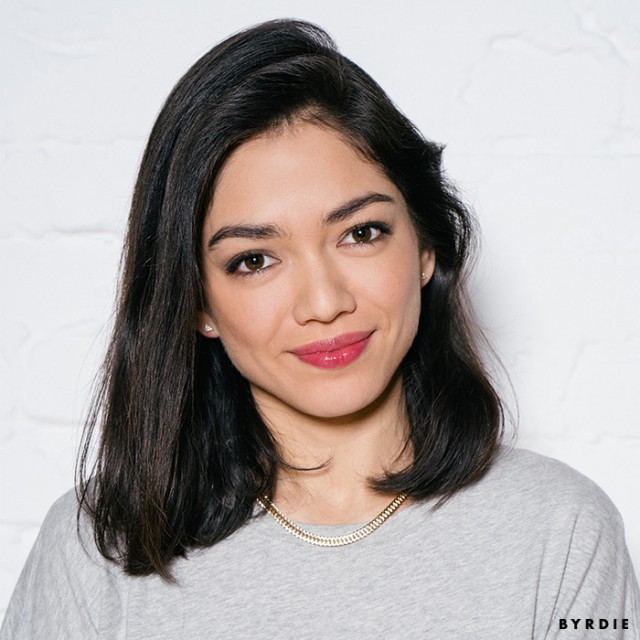
Breathing may be the most innate, natural thing we do, and yet it is so often overlooked as a part of our general well-being. Our breath has the power to fuel our bodies with oxygen, calm the nervous system, relieve tension, and remedy everything from fatigue to stress and high blood pressure. This is especially evident in the practice of yoga, which uses breathing exercises to maximize the body's healing potential and to reap the benefits of one of the most simple acts a human can do.
"Whether in yoga or not, breathing is important," notes Cynthia Lorena Gamarra, yoga instructor, Reiki healer, and founder of conscious lifestyle shop Nourish & Refine. "Essentially, the breath is the source of our life and energy. Besides providing oxygen to the body, the breath also plays a major role in our physical, mental, and emotional state." Taking the time to focus on the breath is especially important in today's world. "We live in a really anxious, high-stress environment, so our breath is trapped in our chest," explains Naomi Zelin, a yoga instructor and Reiki healer with a master's degree in counseling psychology. "Breathing is important because it calms down your nervous system," she notes, describing how it activates the parasympathetic nervous system—also known as "rest and digest"—the opposite of "fight or flight." When we let it go through breathing exercises, we can help cultivate a sense of calm. "It calms down your heart rate and your brain so you can focus on what you're doing at the moment instead of having your mind race."
We had Gamarra and Zelin walk us through the main yoga breathing exercises. They outlined three types of breathing and described how each benefits the body. Keep reading to discover three yoga breathing exercises, as well as strategies for practicing at home or on the go.
What are yoga breathing exercises?
In yoga, energy or life force is referred as prana. "The breath regulates prana throughout the body," explains Gamarra. "Consciously breathing with guided discipline means to control the patterns, rhythms, and movements of the breath throughout the body." She explains that this conscious breath movement accesses a different part of the brain, which aids to achieving a meditated and grounded state. "In asana yoga, or posture yoga, it is extremely important to consciously breathe," notes Gamarra. "Besides providing an efficient amount of oxygen while you keep your body moving, it also ensures that prana is able to flow throughout the subtle energy systems." Moving through the yoga postures, and breathing while doing so, helps to release these blockages, paving a clear path for prana to flow freely.
"Breathwork in yoga is called Pranayama. Prana means life force and vitality, and ayama means expansion, extension, length, and prolongation," says Gamarra. "There are many different kinds of pranayama practices that are meant to achieve different things. It is important to remember that during an asana yoga, or posture yoga class, it's important to inhale and exhale through the nose. The spine lengthens with every inhale. Generally, any time you move to lengthen the spine, you breathe in. When you are folding, bending, and twisting, you generally move on the exhale. Always lengthen the spin before you fold, bend, or twist."
"Just because we have been breathing since the moment we exited the womb does not make us conscious or disciplined breathers," notes Gamarra. "Our physical and emotional states greatly affect the breath and vice versa. Therefore, depending on our state of physical and emotional health, our oxygen intake is affected, movement of prana is affected, levels of energy are affected, and more. Irregular breathing patterns are correlated to a wavering mind. It is believed that to attain a steady mind, the breath should be regulated."
Yoga Breathing Exercises
Gamarra explains that there are many different Pranayama practices meant to aid with different things. "Overall, all forms of conscious breathing will help the immune system, nervous system, levels of energy, and fatigue, as it directly affects the central nervous system and subtle energy systems throughout the body," she says. "I often tell my students that if they control the mind, they've controlled everything. This starts with disciplined breathing. First, we must learn to control the breath."
UJJAYI
"A very basic and common pranayama one can practice during yoga is called the Ujjayi breath, or the ocean-sounding breath," says Gamarra. Zelin explains that this is the breath you use in yoga when you're moving. The breath creates internal heat, and the technique creates an "oceanic 'Darth Vadery' sound." Each inhalation and exhalation occurs through the nose, with which Zelin notes there should be a slight closure at the back of your throat. "As you take a slow and steady inhale through both nostrils, you should feel the incoming air on the roof of the palate," describes Gamarra. "Exhale slowly, while contracting the muscles in the back of the throat."
As a way to practice creating the sound, Gamarra suggests breathing out of your mouth as if you were trying to fog up a mirror with the sound of "haaaaah." Then, close your mouth and try to create the same sound while the air exits through your nose. "Once you've mastered the exhale, you can work on contracting the throat to create a sibilant sound on the inhale," she says. When practicing yoga, the Ujjayi breath starts to warm up. "You have this internal fire that's going to help with digestion," says Zelin. "It's detoxifying and helps to get the chemicals out of your physical body."
Gamarra notes that in addition to being activated during asana yoga, the Ujjayi breath can be done alone, in a seated upright position with an elongated spine. She explains that "Ujjayi helps calm the nervous system, promotes feeling present and grounded, relieves tension, regulates blood pressure, increases oxygen intake, and builds energy."
KAPALABHATI
"For energizing, building heat, and motivation, there are different methods of pranayama," says Gamarra. "Kapalabhati breath, or skull-polishing breath, is great in the early morning to aid in energizing." Zelin compares the method to a jolt of energy or a cup of coffee and says that it's great for fatigue or lack of focus. She explains that the Kapalabhati breath is a forced continuous exhale from the lower abdomen. As with the Ujjayi breath, you breathe out through your nostrils. "It's like controlled hyperventilation," describes Zelin. "All breath is, a lot of the time, is the ability to move sensation and oxygen around—it's a manipulation of oxygen." As such, yoga breathing exercises are all about moving around energy, or prana. Zelin notes that Kapalabhati takes a lot of core activation and creates a lot of heat from the internal body. "It takes a lot of mental and physical endurance," she says.
NADI SHODHANA
"Another one of my favorite pranayama practices to promote balance and grounding is called Nadi Shodhana, also known as Alternate Nostril Breathing," says Gamarra. "First the left nostril is closed off and an inhale is taken through the right nostril. Then you close the right nostril and breathe out of the left nostril. Inhale through the left nostril, and then close it off and exhale through the right. Continue this pattern in a seated, upright position for at least 12 rounds."
Zelin notes that "it takes time to build up the tolerance to do an eight count in and an eight count out" and that it's okay to work up to it. "In yoga, we have this thing called Nadi," similar to meridian lines in the Chinese medicine system, so essentially "energy points moving around your body." The practice of Nadi Shodhana helps you go from the masculine to the feminine side of your body, "trying to cleanse out each side" and find balance. Zelin assures that "you can do [alternate nostril breathing] just a few times, and it will get you in a zen-like state."
For this reason, Nadi Shodhana is an effective method for calming anxiety, notes Zelin. She explains that it can even be used for things like insomnia and also might be helpful with depression because you're balancing out those two sides.
What breathing exercises can one do in the spur of the moment?
"My favorite thing about conscious breathing is that you can do it anywhere and at any time," says Gamarra. "Whether you are driving, at your desk at work, walking your dog, or exercising, you can always practice conscious and disciplined breathing."
Gamarra notes that if you're new to breathwork, start small. "If your current environment allows you to close your eyes, close them. If not, keep them open. Slow down the breath. Breathe in for a count of four, retain for a count of two, exhale for a count of six. Count to yourself. You can also guide yourself to stay focused by reciting 'inhale, 2, 3, 4, hold, 2, exhale, 5, 4, 3, 2, 1.'"
Another useful method Gamarra recommends to ensure you are breathing deeply is to use a natural- and therapeutic-grade essential oil on your hands to breathe in. "Take one drop of oil in your hands, and rub your hands together," she advises. "Then, while holding your hands up to your nose, breath in for four counts, hold for two, and exhale for six. Different scents aid with different things. For example, if you're looking to calm anxiety, use lavender or rose. If you are trying to energize, use lemon or peppermint."
What strategies do you recommend for someone practicing yoga breathing exercises at home?
"The most important thing is to remember that practice means you are learning," reminds Gamarra. "Be patient, and take your time. Pranayama should always be practiced where the air is clear and in a clean environment. Always practice pranayama with an elongated spine to keep a clear passageway for the breath and prana to flow freely. As you gain more experience with a professional, you will learn different approaches and different postures. In the meantime, start right where you are and remember it is a process and you are retraining your body and mind to breathe in a way you are not used to."
What are some common mistakes to avoid when practicing yoga breathing exercises?
Zelin assures that there are not many mistakes to worry about as long as you're trying and reassures that it's natural for yoga breathing exercises to feel a bit awkward at first. "The more often you do it, the more your body knows how to calm itself," she explains. "It's all about repetition. When you start to do it more, your body's going to drop into that calm state quicker."
The most important thing is to pay attention to your body and listen to the way you're feeling. "If you find that you are lightheaded or dizzy when practicing, then you are doing it incorrectly," warns Gamarra. "Conscious breathing is here to make you feel better and to ground you. Slow it down, and ensure your inhales are deep. Your posture is everything. Avoid slouching by keeping the shoulders down the back and relaxed. Let the belly soften, relax the jaw, and keep your chin parallel to the floor. Make sure to breathe down into the diaphragm first rather than shallow breaths into the chest. Most importantly, be patient with yourself."
Gamarra makes an important point to always ask your doctor about specific movements and breathing techniques if you have any concerns, especially if you are pregnant.

Now learn how to start doing yoga at home (when you have no clue where to begin).
Disclaimer
This article is provided for informational purposes only and is not intended to be used in the place of advice of your physician or other medical professionals. You should always consult with your doctor or healthcare provider first with any health-related questions.

Who's your style icon?
My mom circa 1975
Who are your 5 favorite people to follow on Twitter/Instagram?
@fingermonkey @katefoley @idea.ltd @designmilk @overheardla
What's the fashion essential you can’t live without?
My black-on-black Birkenstocks. If that even counts.
What's your desert island album?
Radiohead's OK Computer. Or maybe Pablo Honey for something a bit more uplifting if I'm going to be stuck by myself.
What's your favorite WhoWhatWear.com story?
California Dreaming with Poppy Delevingne
-
 NGL, I Always Get Compliments When I Wear This Brand to My Workout Classes
NGL, I Always Get Compliments When I Wear This Brand to My Workout ClassesYou just have to see the new collection.
By Emma Walsh
-
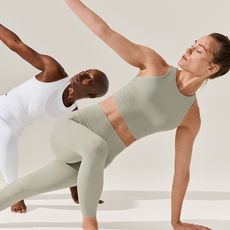 I Live for Yoga and Pilates—These Are the Pieces That Help My Flow
I Live for Yoga and Pilates—These Are the Pieces That Help My FlowTake notes.
By Humaa Hussain
-
 The Buzzy Activewear Trend You'll Want to Try for Your Next Yoga Class
The Buzzy Activewear Trend You'll Want to Try for Your Next Yoga ClassIt's back.
By Sarah Yang
-
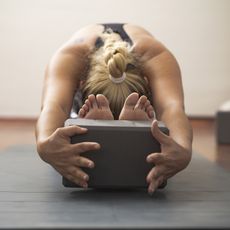 The Accessory That Will Level Up Your Yoga Workouts
The Accessory That Will Level Up Your Yoga WorkoutsThey're great for balance and stability.
By Sarah Yang
-
 Yoga Versus Pilates: How to Figure Out Which Workout Is Better for You
Yoga Versus Pilates: How to Figure Out Which Workout Is Better for YouIt all comes down to movement.
By Casey Clark
-
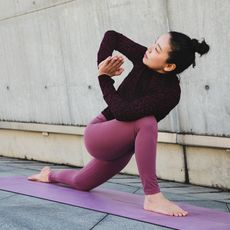 7 Basic Yoga Poses That You Probably Should Know
7 Basic Yoga Poses That You Probably Should KnowGuaranteed you'll be doing them in class.
By Sarah Yang
-
 15 Yoga Shorts That Will Make You Rethink Your Usual Leggings
15 Yoga Shorts That Will Make You Rethink Your Usual LeggingsThey're so comfortable.
By Sarah Yang
-
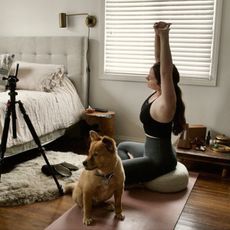 These Relaxing Yoga Poses May Actually Help You Fall Asleep Tonight
These Relaxing Yoga Poses May Actually Help You Fall Asleep TonightBreathe in, breathe out, and set your phone to airplane mode.
By Lindy Segal





